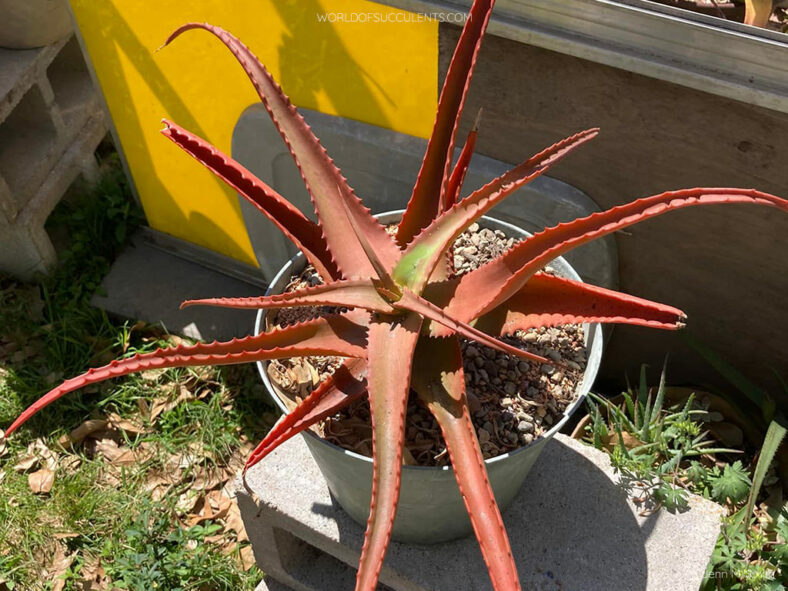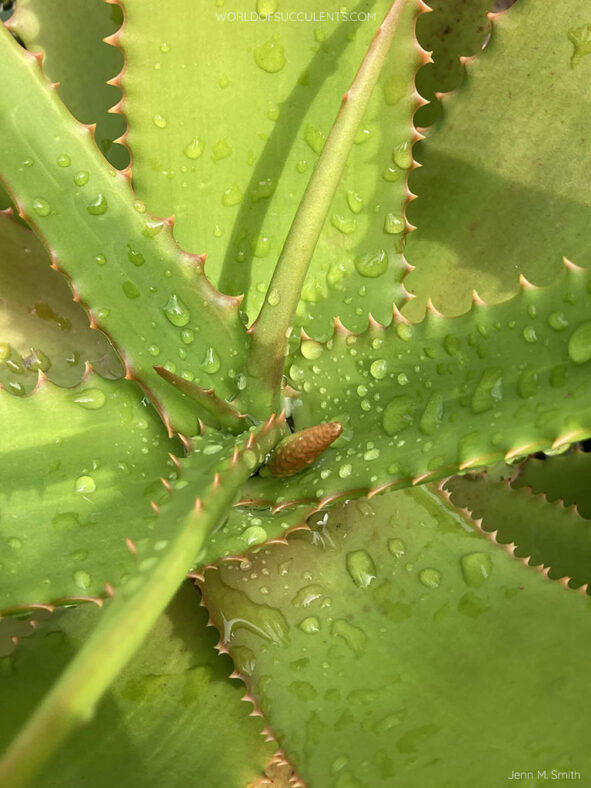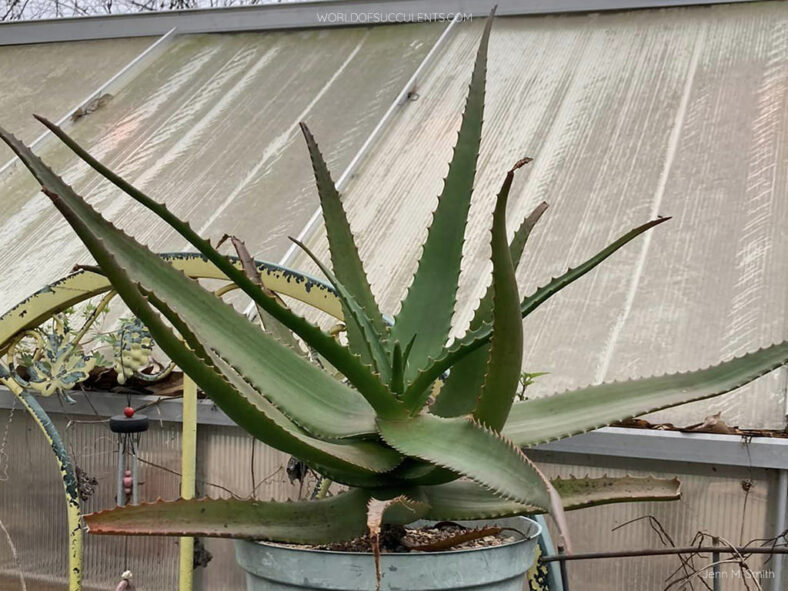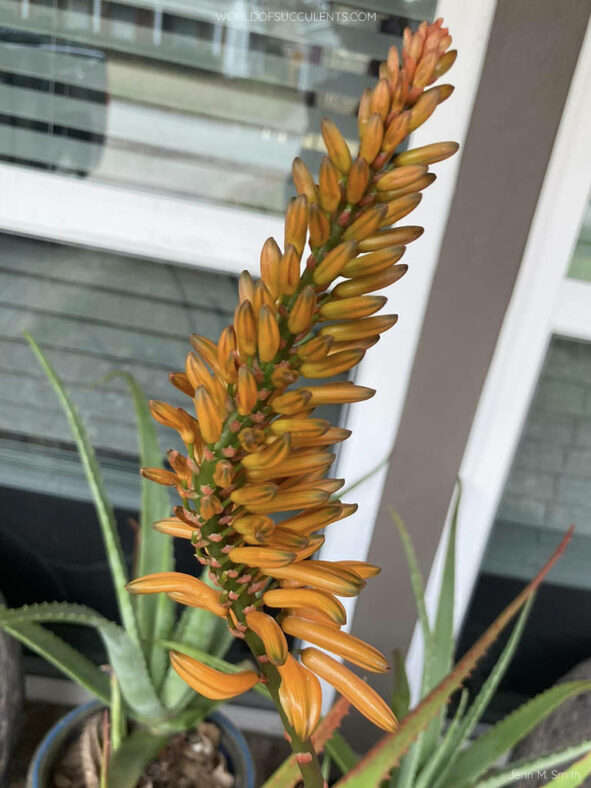Aloe 'Mango Madness' is a hybrid with a foliage that changes color throughout the year and produces attractive clusters of mango-colored flowers.
Scientific Name
Aloe 'Mango Madness'
Scientific Classification
Family: Asphodelaceae
Subfamily: Asphodeloideae
Genus: Aloe
Origin
Aloe 'Mango Madness' is a hybrid created by Brent Wigand in Wildomar, California, United States. It results from a cross between Aloe vanbalenii and Aloe cameronii.
Description
Aloe 'Mango Madness' is a beautiful succulent that forms lax rosettes of green leaves that turn a coppery red in the summer. It has a stem and can produce branches at the base and above, creating a clump with age. The leaves are lance-shaped with a channeled upper surface and sharp, widely deltoid, reddish teeth along the margins.
During winter, Aloe 'Mango Madness' produces large mango-colored flowers in somewhat narrowly conical racemes supported by a usually unbranched peduncle.

How to Grow and Care for Aloe 'Mango Madness'
Light: When growing Aloe 'Mango Madness' indoors, place it in a window that receives plenty of bright, indirect sunlight. Rotate the pot once or twice a week to ensure all sides of the plant receive equal lighting. Outdoors, the plant prefers light shade, especially during the hottest parts of the day.
Soil: Great drainage is essential for growing this plant because too much moisture for an extended period can cause root rot. Use commercial soil for succulents, or make your own well-draining mix.
Temperature: When temperatures drop below 50°F (10°C), it's time to bring this plant inside. It tolerates heat fairly well but will not survive a hard frost. Aloe 'Mango Madness' grows best in USDA Plant Hardiness Zones 10a to 11b, with average minimum winter temperatures ranging from 30°F to 50°F (-1.1°C to 10°C).
Watering: This plant requires regular watering but can tolerate brief drought conditions. Water deeply, but only when the soil is dry to the touch. Do not let water stand in the rosettes. Reduce watering during the winter months.
Fertilizing: Although it generally does not require fertilizer, this plant will benefit from extra nutrients. Use a water-soluble fertilizer diluted to half the recommended strength.
Repotting: Repot only as needed during spring. Pick a container that is one size larger and has drainage holes.
Propagation: To propagate Aloe 'Mango Madness', take stem cuttings from late spring to early summer.
Learn more at How to Grow and Care for Aloe.
Toxicity of Aloe 'Mango Madness'
Aloe 'Mango Madness' is not known to be toxic to people or pets.
Links
- Back to genus Aloe
- Succupedia: Browse succulents by Scientific Name, Common Name, Genus, Family, USDA Hardiness Zone, Origin, or cacti by Genus
Photo Gallery
Click on a photo to see a larger version.


